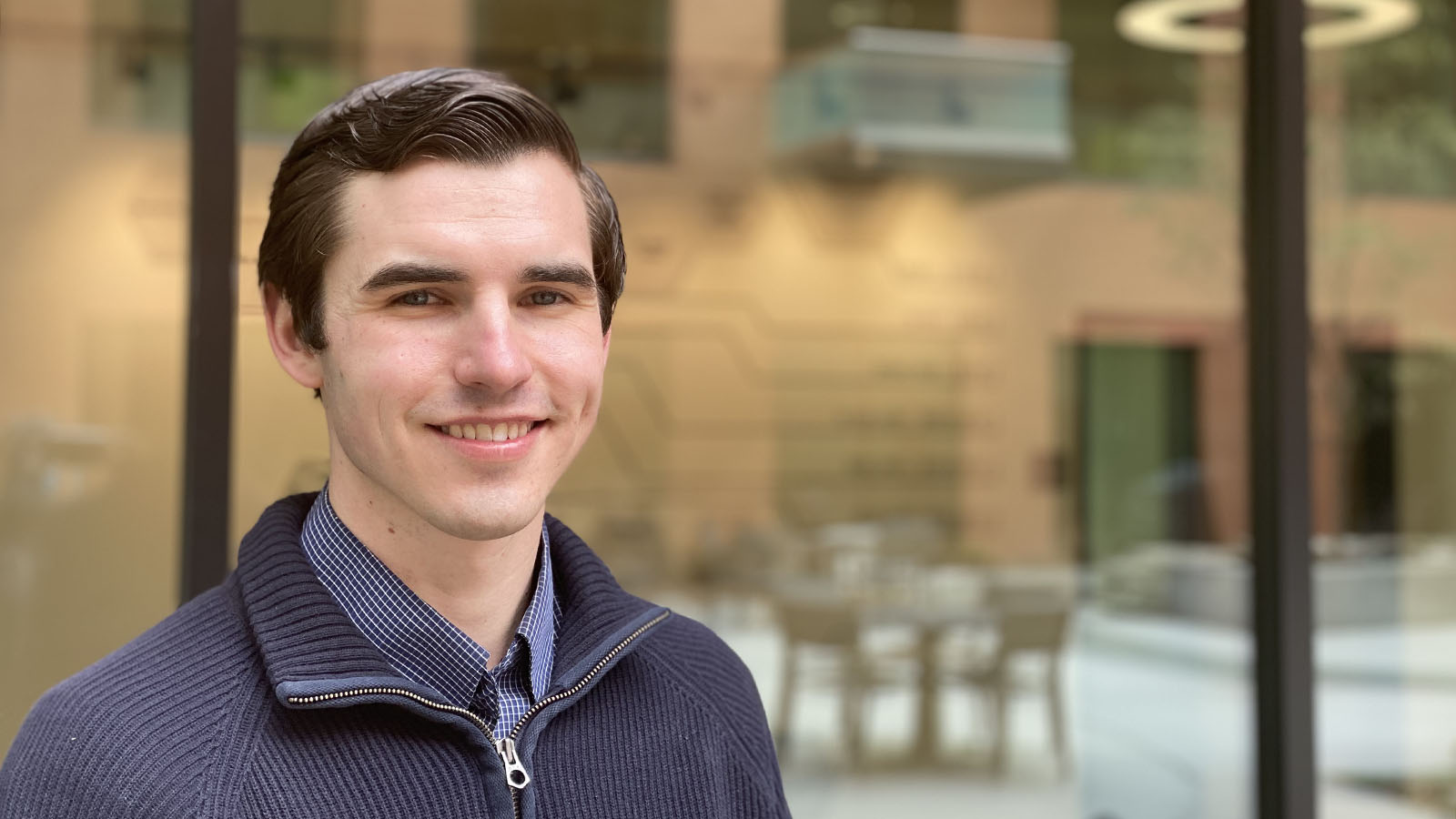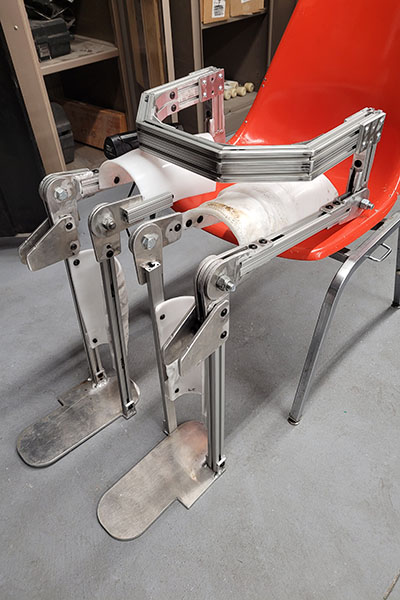Small grant fuels big dreams in tech development for wheelchair users

Logan Coordinator Dan O'Crowley
Dan O’Crowley has coordinated Utah Assistive Technology Program’s Logan location for several years, helping people with all kinds of disabilities meet their goals for independence. And in that time, he has learned that the word “inaccessibility” has many factors. Sometimes it’s the physical barriers standing between wheelchair users and the world.
But O’Crowley has met many people who come up against another, enormous barrier: cost. Those who have insurance may be able to overcome that barrier somewhat. But not all devices qualify for insurance coverage.
O’Crowley had both barriers in mind when he began a project to develop a rolling exoskeleton: a device that would combine the health and accessibility benefits of a walking exoskeleton with the energy-conscious, battery-saving benefits of a wheelchair. Because he is a soon-to-graduate mechanical engineering student, he gathered a team of fellow student engineers, applied for a student research grant and got to work.
“Exoskeletons show a lot of promise for dealing with many of the health issues of wheelchairs,” he said. “They also show a lot of promise as far as access in the community that goes with being able to reach up high, step over curbs, and step into vehicles. This lessens the need for adaptive vehicles or a lot of adapted places. The downside of exoskeletons, though, is that they don't last all day and they’re very expensive without insurance support.
“They generally last two to three hours on a single charge. With a second rechargeable battery pack, they can push it to four to six hours of running time. Well, we're still a long way off of the 12 or so hours that you would need [for a primary mobility device].”
Wheelchairs use less energy because rolling takes a lot less power than robotic walking. But they come with their own baggage: they have trouble surmounting physical barriers, they can cause health problems that come with prolonged sitting, and they make it hard for wheelchair users to have a conversation eye-to-eye.
 O’Crowley and his team of student researchers have had a few months and a $2500 Undergraduate Research and Creative Opportunities grant from Utah State University to take a running start at a solution: a hybrid device that allows its user to sit, stand, roll, step over a curb or stair, and enter or exit the driver’s seat of a vehicle.
O’Crowley and his team of student researchers have had a few months and a $2500 Undergraduate Research and Creative Opportunities grant from Utah State University to take a running start at a solution: a hybrid device that allows its user to sit, stand, roll, step over a curb or stair, and enter or exit the driver’s seat of a vehicle.
Such a device would have lots of advantages. Not only would it surmount obstacles and use battery power much more efficiently than an exoskeleton; it might also one day be considered as a primary mobility device that insurance would cover. Currently, exoskeletons are considered therapeutic or recreational devices for temporary use, so they fall outside insurance coverage.
A rolling exoskeleton would also allow the user to drive a vehicle. “Cost wise, you wouldn't need an adapted van like you would for a power wheelchair. That would continue to bring this device within the realm of possibility. Because if you have a power wheelchair, for true independence, you would also need a converted van. Add those two costs together, versus if you could get an exoskeleton with wheels on it. You would still need hand controls, but you wouldn't need all the other things like lowering the bottom of the van or raising the roof or doing a ramp that is the bulk of the expense of a conversion.”
There are other practical things to consider. “We've been taking a lot of time and working with two mentors who are full time wheelchair users for many years, to figure out from their perspective what they would want a device like this to be able to do,” O’Crowley said. “One of the improvements they brought up that I didn't think about … They're looking at exoskeletons and how they're designed and going, ‘Honestly, that would take me quite a while to get myself unstrapped out of the exoskeleton to use a toilet.’”
The student team will work on that and other practical problems in hopes of finding some solutions.
Mary Ellen Heiner, a senior project coordinator at the Institute for Disability Research, Policy & Practice, is a wheelchair user and one of the mentors on the project.
“If the dream were a reality and the device was affordable, it would mean almost complete independence,” she said. It would mean reaching items from the top shelf of a grocery store, getting in and out of a car without dealing with a wheelchair, and carrying on a conversation with a tall person without scrunching her neck to make eye contact.
“It would be life-changing,” she said. “It’s the difference between inclusion and belonging.”
She hopes the idea can work through the pracitcalities and find support and funding to become reality someday.
The design team includes O’Crowley and mechanical engineering students Reva Grandstaff, Emron Bardsley and Shannon Stephans. UATP volunteers Todd McGregor and Mike Stokes have lent their expertise, too.
Want to learn more? The team’s device will be featured in the USU College of Engineering’s Poster Session on April 4 and USU’s Student Research Symposium during Research Week in April.

